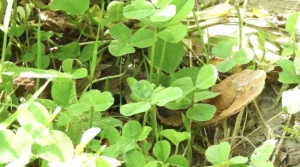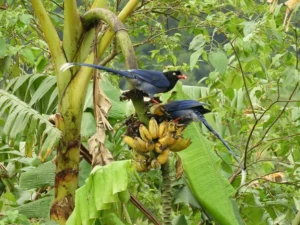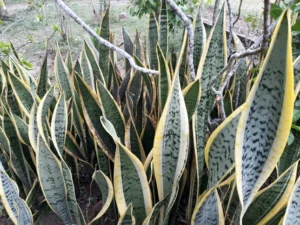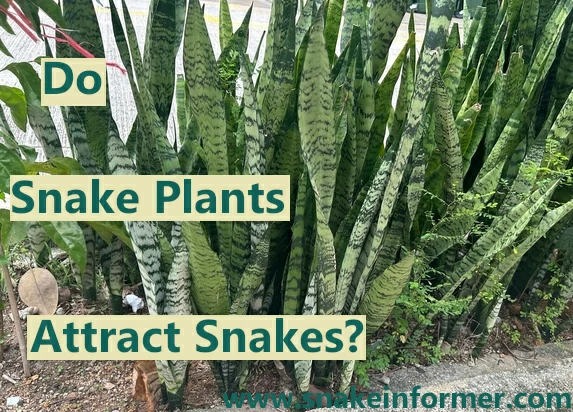Snake plants (Dracaena trifasciata) are succulent plants native to west and central Africa. These plants are commonly kept as houseplants, due to their low maintenance and hardy nature.
Snake plants do not attract snakes. The name “snake plant” refers to the plant’s appearance, with its long, upright leaves that form snake-like patterns. These plants have no connection to actual snakes.
Their name is merely a description of their appearance, and nothing more.
There Are No Plants That Inherently Attract Snakes
There is no plant that snakes are naturally attracted to, just because of the plant itself.
Snakes are not attracted to plants based on appearance or scent.
When people think snakes are attracted to their plants, it’s always because of secondary factors (the environmental conditions that form around the plants).

In general, snakes are drawn to environments where they can find, cover, food, water, or breeding sites.
If the area around a plant can create this environment, it can draw in snakes. But it’s never about the plant itself.
It’s always about the ecosystem that naturally develops around the plant.
3 Reasons Why Some Plants Seem to Attract Snakes
Here are 3 reasons why snakes are drawn to some plants.
1. Cover and Shelter
Snakes are secretive animals that heavily rely on their surroundings to protect themselves from predators and also to regulate their body temperature.
Because of this, snakes are drawn to places that offer reliable shelter.
Plants that grow close to the ground, with dense foliage, provide an enclosed, shaded environment – that can become a magnet for snakes.
The cover provided by the foliage, as well as dead leaves and plant debris that accumulate on the ground – enable snakes to stay hidden from predators.
It also provides protection from direct sunlight, enabling snakes to stay cool in hot weather.
2. Availability of Food
Snakes are obligate carnivores, which means their diet is entirely made up of animal products.
Their habitat choices are strongly influenced by the availability of small animals to prey on.
Many fruit-bearing plants often drop ripe or damaged fruit to the ground.
These fallen fruits quickly attract rodents, birds, and bugs which feed on the fruits.

The abundance of bugs then draws in frogs, toads, and lizards which feed on the bugs.
This concentration of small animals can attract snakes, especially species that prey on rodents, birds, or reptiles.
Snakes in general, are very opportunistic and will be drawn to any area where they can find a reliable source of food.
If left unmanaged, fruit-bearing plants can create an environment that is very attractive to snakes.
An example of plants that provide these conditions: Banana trees.
3. Moisture and Humidity
Snakes need water just like any other animal.
Overwatered plants, or even a dripping hose can attract them, especially in dry weather.
Humid conditions around plants can also attract a wide range of amphibians, and become a natural hunting ground for amphibian-eating snakes.
Worldwide, many snakes primarily feed on amphibians and rodents.
For example, in North America, the primary food of the eastern hognose snake is toads.
In fact, Eastern hognose snakes are so specialized in eating toads, that they have large teeth in the back of their mouths to puncture inflated toads to make them easier to swallow.
Garter snakes are also heavily reliant on frogs, toads, salamanders, and newts as food.
Snakes Are Not Attracted to Snake Plants
Snake plants do not provide any of the conditions that would attract snakes to plants.
- They have tall, vertical leaves, with little to no branching. They do not provide any dense canopy, or ground-level shade that snakes can hide under.
- They are drought-tolerant and do not need to be watered often. This means the area around them is usually dry, and unappealing to snakes looking or moist environments.
- They are typically planted in decorative pots, and don’t accumulate the layers of fallen leaves, and dead plant debris that snakes love to use for shelter.
- They generally don’t attract rodents, birds, or other small animals that snakes like to prey on.

Unless grown outdoors, and surrounded by dense vegetation, snake plants do not offer an environment for snakes to hide, hunt, or rest.
5 Tips to Keep Snakes Away From Your Outdoor Plants
If you live in an area where snakes are common, and you think snakes are attracted to any of your outdoor plants – you have to make the area around the plants less attractive to snakes.
Here are a number of things you can do to keep snakes away from your plants.
1. Clear Fallen Fruit and Leaves
Maintaining cleanliness around your plants is one of the most effective ways to discourage snakes from coming to the area.
Around fruit-bearing plants, frequently removing fallen fruit or overripe fruits, helps prevent the attraction of rodents, insects, and other small animals that snakes prey on.
Dead leaves that accumulate around the base of plants create thick layers of organic litter.
This buildup can create cool, dark, and moist pockets, making ideal hiding places for snakes seeking shelter.
By keeping the ground clear and clean, you reduce shelter and food availability, making the environment less attractive for snakes.
2. Reduce Hiding Places
Tall grass, overgrown vegetation, and piles of rocks or logs provide the perfect cover for snakes to hide in.
They also attract mice and other small animals that snakes prey on.
It’s important to keep the area around your plants open.
Regularly mow tall grass, remove rock piles and other debris, and clear any dense vegetation that grows close to the base of your plants.
Creating open space reduces the number of places where snakes can hide, and makes the area less inviting to them.
3. Control Rodent and Insect Populations
One of the easiest ways of keeping snakes away is to get rid of the “snake food” (prey animals) you have in or around your plants.
You can do this by getting rid of trash piles, or anything that may attract rodents or insects.
Ensure that food scraps are disposed of properly, as rats and mice are attracted to places where they can find food.
Also, avoid leaving uneaten pet food outdoors, and consider storing any bird seed in rodent-proof containers.
You could also use rodent traps placed around the banana plants, especially in areas where you frequently see rodents.
To control insect populations, use natural insecticides like neem oil, and get rid of standing water that can act as a breeding ground for many insects.
In essence, make sure there is nothing in or around your plant, that can attract mice or other animals that snakes prey on.
4. Trim and Space Your Plants
Plants that grow with dense foliage provide ideal cover for snakes.
It’s important to regularly trim your plants and remove excess vegetation.
Also, space your plants to reduce shade and create open areas – that make it easy to see any snakes or other small animals that get near.
5. Install a Fence Around Your Plants
In small gardens, you can install fine mesh fencing around plants or even the entire garden.
This fencing will act as a physical barrier and block off any snakes that may be attracted to your plants.
It’s recommended to combine physical barriers, with other types of habitat control (eg, keeping the grass short, getting rid of rodents, etc.).
This creates a multilayered “snake prevention system“
Conclusion
The “snake” in the name “snake plant” refers to the plant’s appearance, and has nothing to do with actual snakes.
Snake plants do not attract snakes. In fact, no plant inherently attracts snakes.
The reason some plants seem to attract snakes is because they create conditions that snakes find appealing, such as food, cover, or moisture.
However, snake plants with their upright structure, dry base, and lack of small prey animals, make them the opposite of what snakes would gravitate to.
Featured image credit: 博愛醫院陳楷紀念中學 (CC BY-NC 4.0)
Sources:
North Carolina State University:Dracaena trifasciata
Pennsylvania State University Extension: Snake Plant: A Forgiving, Low-maintenance Houseplant
Hi, my name is Ezra Mushala, i have been interested animals all my life. I am the main author and editor here at snakeinformer.com.

